
Drain Flies
Drain flies are also sometimes called sewer flies or filter flies. They are very small flies about 1/16” long with light bodies. The hold their leaf shaped wings roof like over their backs when at rest. Both the body and their wings are covered with long antennae with 13-15 bead-like segments. The larvae are aquatic and are long and cylindrical with the fore end of the body somewhat flattened on the lower side where eight suckers are found. They have dark, hardened patches on the back of each segment and they breathe through a hardened, stalk-like siphon tube at the end of the body.
Biology
Drain flies may become an annoying problem in some homes where they can be found breeding in the liquids found in drains, dirty garbage containers, or septic tanks. They are also frequently a problem when they breed in large numbers in the filter beds of sewage treatment plants. The adult flies are poor fliers and are found in great numbers on walls or flying weakly in the area where they developed.
The females lay 20-100 eggs in a Jell-O like mass in any suitable breeding material. The eggs hatch in two days and the larvae finish development in 9-15 days. The larvae feed on algae, fungi, bacteria, and sludge. The pupal stage lasts about a day and a half. The adults feed on nectar or polluted water.
Control Methods
When these flies are a persistent problem in a home it is evident that they are either developing in the home or in a nearby source such as a sewage treatment plant. Whenever practical the source of infestation should be found and eliminated mechanically. The use of non-residual insecticides can knock down the adult population but will not eliminate infestation. A drain cleaning maintenance program may be needed, with the use of an enzyme, to destroy the breeding site.

FRUIT FLIES
Adults are 1/8” long and dull yellow-brown to dark brown. Many species have distinctive red eyes, and the wings have two “breaks” in the leading edge nearest the body. The larvae are small (1/10 – 1/5 inch long) and very distinctive with an extended, stalk-like breathing tube at the rear of the body. The pupae are brown and seed-like with two horn-like stalks at one end.
Biology
Fruit flies are common structural pests frequently associated with fermenting fruits and vegetables. They easily develop in over-ripe fruits or other foods, fermenting liquid in the bottom of garbage cans, a dirty mop, or a rotting potato or onion in the vegetable bin. Recycling bins and fruit and salad bars are ideal habitats and have resulted in increased problems with this pest fly. Recently emerged adults are attracted to light.
Control Methods
Fruit flies are best controlled by locating and eliminating the breeding material. The presence of adult flies indicates that the larvae are developing in some nearby fermenting materials. Complete and thorough sanitation is necessary to eliminate the source of the infestation. Insect light traps and baited jar traps fitted with tops which permit fly entry and prevent escape are effective in reducing the population but are no substitute for sanitation. Several species are small enough to pass through typical screens, so a smaller mesh may be required. In some situations, an aerosol can be used to knock down adults.

HOUSE FLIES
Adult houseflies are approximately 1/8-1/4” long, females usually being larger than the males with wider set eyes. They are dark gray in colour with 2 velvety stripes, silver above and gold below. Their thorax has four narrow black stripes. House flies are general feeders, attracted to a wide variety of substances from excrement to human foods. These flies have been shown to harbour over 100 different kinds of disease causing pathogens, many of which are associated with filth. These include typhoid fever, cholera, diarrhea, dysentery, tuberculosis, anthrax, polio and others. They have shown to be disease pathogen transmitters via their vomit, feces, and contaminated external body parts.
Habits
Most house flies will stay within 1-2 miles of their hatching site, if food is sufficient. Females seek warm moist material with sufficient food for larval development for egg laying purposes. During the day, house flies tend to rest less than 5 feet from the ground on walls, floors, and various objects. At night they rest primarily above 5 feet near their daytime food sources.
Control Methods
House fly control is a 5 step process:
IDENTIFICATION – Be sure the fly IS a house fly!
INSPECTION – If possible, locate the breeding and larval development sites.
SANITATION – This involves the removal or elimination of the larval developmental sites. This may include emptying and cleaning garbage receptacles. Sanitation should eliminate the bulk of the fly problem so that mechanical and insecticidal measures will be more effective.
MECHANICAL – Have garbage receptacles with tight fitting closures, tight fitting doors and windows, self closing doors, seal all holes in structure, all vents securely screened. Use insect light traps, Flylight Jr, Goldsticks etc. to trap flies indoors. Fly traps outdoors, work very well.
INSECTICIDES – Insecticide application involves using appropriately labelled insecticides to vertical walls adjacent to the dumpsters and other breeding sites, as well as the use of fly baits near adult feeding sources. Indoors the use of automatic dispensers may be useful to knock down the flies.
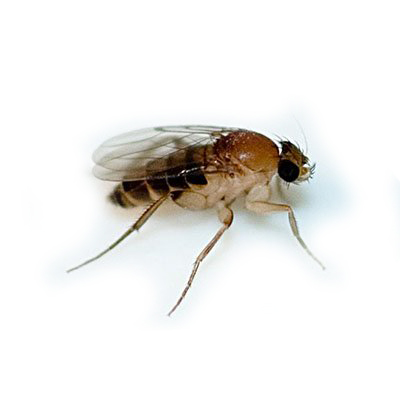
PHORID FLIES
Adults are about 1/64-1/4” long with a humpbacked appearance in lateral view. Phorid flies can be yellowish, black or brown in colour. Short antenna, basal 2 segments very small, 3rd segment globular with a long bristle. Wings have strong, heavily pigmented veins in front area, remaining veins weak and without crossveins. Larvae up to 3/8”; spindle shaped with projections on rear segments to shorter, broader projections dorsally. Colour is whitish, yellowish white or grayish.
Biology
Females lay their eggs either onto or into the larval food, with 1-100 being laid at one time and up to 749 in her lifetime. There are 3 larval instars. The 3rd instar larva crawls to a drier area to pupate. Habits: Adults can often be found at flowers or on larval food materials which consist of moist decaying organic matter. Because they frequent such unsanitary places, they may transport various disease-causing organisms to food materials. Several species breed in human corpses and are commonly referred to as coffin flies when they become problems in morgues or mortuaries. They are of great concern in health-care facilities because of their unsanitary habits, and because larvae have been found in the open wounds of patients.
Larvae breed in a wide variety of moist decaying organic matter which includes dung, fungi, and decaying plant material. Some are parasitic structures, breeding materials can include the moist organic film lining drain pipes, the moist residue in the bottom of trash cans, in elevator pits, garbage disposals, dirty moist mop heads etc. In offices, over-watered plants are often the source. Other sources can be the fresh-cut flowers in vases, soiled bedding materials in the bottom of animal cages, boot polish, glue paint, and leaky sewage pipes.
Control Methods
Follow the basic 5 steps of identification, inspection, sanitation, mechanical control/exclusion and insecticide application if required.
The key is finding and eliminating all of the breeding sources. A residual insecticide is rarely required, though after the breeding sources have been eliminated a non-residual insecticide can be used to kill the adults present. A drain cleaning maintenance program may be needed with use of enzymes to destroy the breeding site.
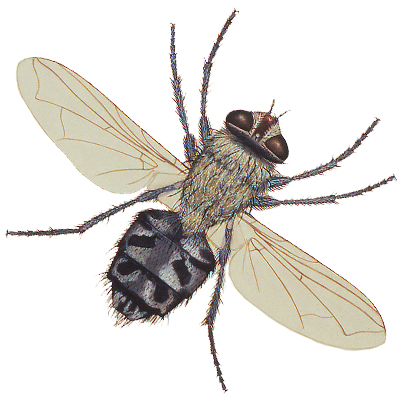
CLUSTER FLY DESCRIPTION
The adult cluster fly is 5/16”-1” long, slightly larger than a common house fly. It is gray in color with golden hairs on its thorax. When it lands on a surface, it folds its wings one on top of the other flat over its back. Cluster flies are slightly larger and darker than house flies and have a coating of short golden hair on their thorax. Cluster fly larvae look like typical maggots but are seldom seen because they spend their lives as parasites inside earthworms
Identification
In the early spring, Cluster flies lay their eggs in cracks in the soil. During the summer, the eggs hatch and the emerging larvae (maggots) penetrate earthworms and develop as a parasite in their hosts. There are several generations during the summer. The adults stop egg-laying in mid-late fall and seek hiding places in which to overwinter.
Habits
Most of the flies spend the winter outside in and on fence posts, under stones and in other protected places. Cluster flies are usually a greater problem in rural and suburban areas due to the large grassy areas that favour high earthworm populations. Overwintering adult Cluster flies are an annual problem in many houses. These flies normally live outdoors where they occur on flowers and fruits. In late summer and fall, when the weather turns cool, cluster flies may congregate on sunny walls. They enter the home to overwinter through any available access. In the home, the flies hide, often in a cluster in attics and walls voids, in dark corners, cracks, under clothing in closets, beneath curtains, behind pictures and furniture etc. On warm, sunny days in the winter and spring, the flies often emerge from their hiding place and swarm on windows causing great annoyance by their buzzing and by their presence. Dead flies provide a food source for larder beetle larvae and can contribute to the presence of other nuisances in the house.
Cluster flies are not related to livestock production. They do not develop in manure or manure pits. They are not interested in food, do not develop in garbage and are not a sign of unsanitary conditions.
Control Methods
To prevent the entry of the flies in the fall, screen attics and roof vents and fill all cracks, crevices and other points of entry with caulking or other crack filler. Tighten baseboards and quarter round.
The target stage for control of most fly pests is the larval stage when control is based on elimination of breeding material. But, because cluster fly larvae are parasitic on earthworms, and earthworms are an important part of the soil fauna, the larval stage of the cluster fly is not a practical target for control. The only feasible control methods for cluster flies center around keeping the adults out of house and killing those that do manage to get inside. Inspect the sides of your house for cracks and try to determine where the cracks lead, thereby locating the voids where the flies may overwinter. Treat the voids with an insecticide dust. An appropriately- labelled pesticide applied to exterior entry points on the sunlit sides of the house in late summer or early fall may be effective. This application is made before the flies begin their search for overwintering spots in order to kill flies as they attempt to enter. Flies found on the windows can be killed with a fly swatter and removed with a vacuum cleaner. Insecticides registered for indoor control of flies can be applied between inner and storm windows or directly on insects.
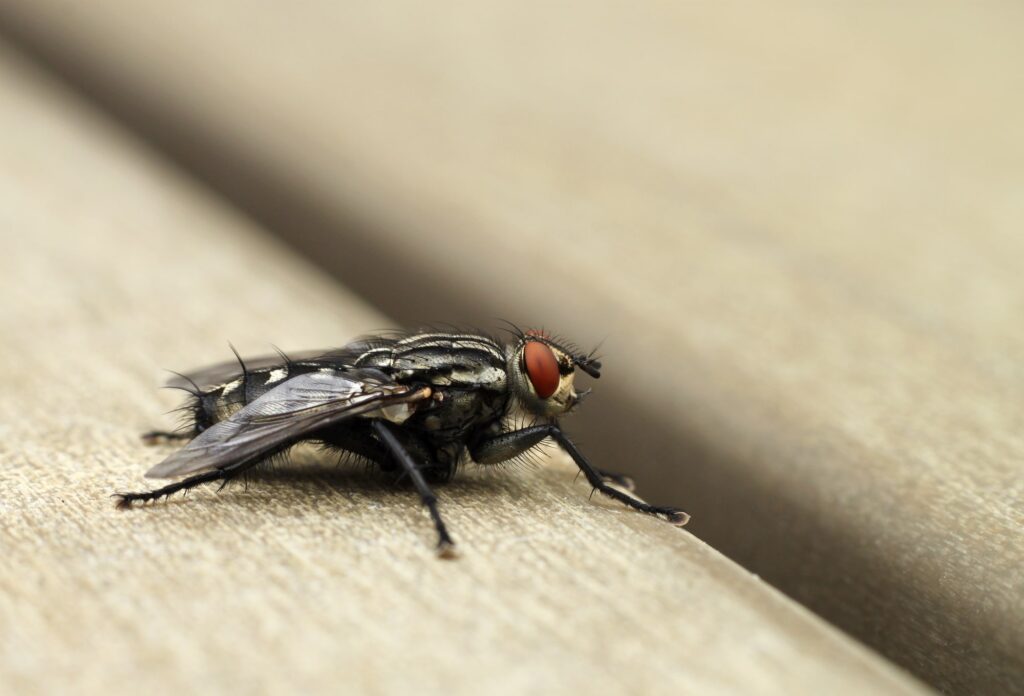
What’s the difference between house flies and cluster flies?
Flies are among the most bothersome when it comes to common household pests. But did you know there may be several types of flies buzzing around your home? Distinguishing between house flies and cluster flies can help you better control the pesky insects and prevent them from invading your home. What are cluster flies? Cluster…
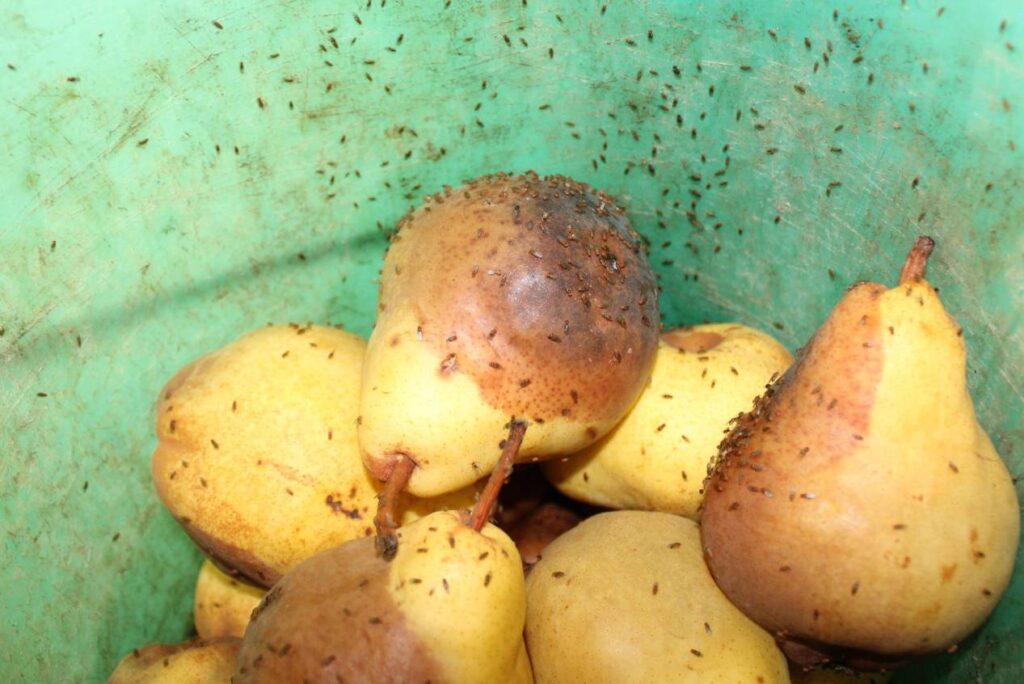
Don’t let fruit flies ruin your summer
Fruit flies are small, but mighty! Under the right conditions, these teeny tiny critters can quickly get out of hand inside your home. Contrary to popular belief, fruit flies don’t spontaneously grow out of rotting materials. They find their way inside by following the odours of fermentation and alcoholic beverages, overripe fruit, or hitching a…
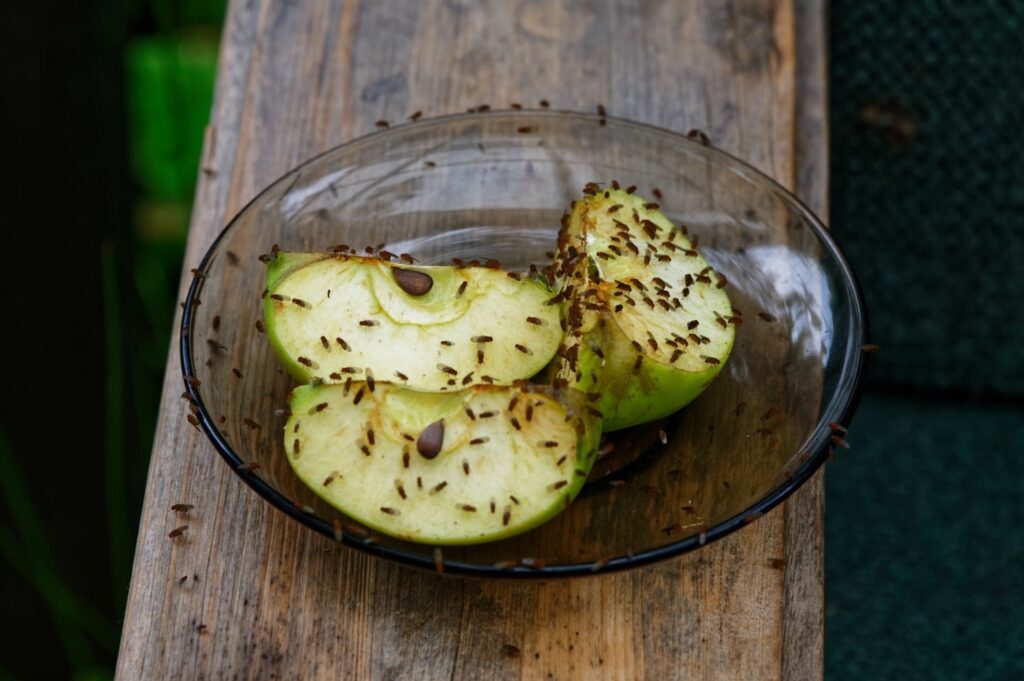
How to get rid of fruit flies in your house
Are you troubled by pesky fruit flies swarming your kitchen counter? Here’s a handy guide to clearing them out for good. Find the sources First, find and eliminate any potential source of your infestation. Decaying fruit is the fruit fly’s ideal breeding ground, but it’s not the only one. These clever critters can breed in…
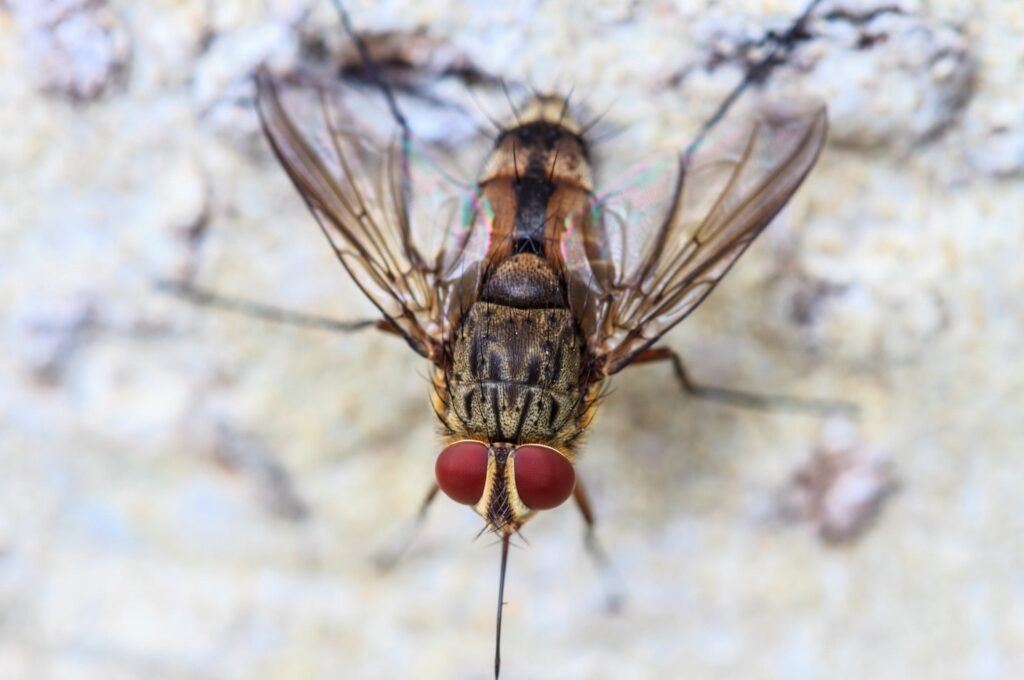
How to prevent cluster flies
Of the many flies you encounter in your home, you may be unaware of cluster flies as distinct species. They’re more nuisance than hazardous. If you treat them inside your house with long-lasting pesticides, their dead bodies can attract larder beetles and other scavengers, which may create more troublesome issues in your home. They also…

